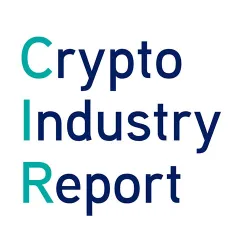Terra relaunch: Rising phoenix or a burning out flame?
This week, our blockchain experts assessed the following topics:
- Terra relaunch: Rising phoenix or a burning out flame?
- Are NFTs more than just stupid monkey pictures?
- ETHBTC-Chart: Is there a death blow coming for Ether?
- Calls for crypto regulation are intensifying
Our bi-weekly Crypto Industry Report provides you with valuable information on the global crypto industry – picked and analysed by our blockchain experts.
Terra relaunch: Rising phoenix or a burning out flame?
After the epic Terra ecosystem collapse with LUNA and UST going to virtually zero, the project was recently relaunched according to a pre-set revival plan. Following a vote, over 65% of all community members voted in favour of starting Terra as a completely new blockchain. The original plan of doing a hard fork was discarded. On May 28, Terra’s new blockchain went live under the old name, while Terra’s original blockchain will continue and be named Terra Classic (LUNC).
With this relaunch, Terra’s focus will continue to be on decentralized finance. According to the revival plan, no new algorithmic stablecoin is planned as of yet. As a matter of fact, the Terra community is still trying to restore UST’s dollar peg as community members have just unanimously voted to burn 1.388 billion UST, bringing down the stablecoin’s supply in an effort to re-stabilize its value.
To make up for part of the losses that Terra community members had to swallow with the Terra/Luna collapse, they have received an airdrop on Terra’s newly-launched blockchain. 30% went to a community pool, 35% to pre-attack Luna holders, 10% to pre-attack UST holders, 10% to the Luna team, and 15% to UST investors, who acquired their tokens after the crash.
Soon after the launch and airdrop, crypto exchanges like Binance, Kraken, or Huobi listed the new token Luna 2.0. And only a few days after the restart, the new token has reached a price of more than $9. The question that investors have been asking: Is Terra a rising phoenix or is the relaunch just the last flame that will burn out soon? After all, Terraform Lab’s employees have been subpoenaed by South-Korean authorities, while several victims of the Terra/Luna fiasco have filed a complaint against the company behind the project.
Are NFTs more than just stupid monkey pictures?
Bear market sentiments have taken hold of the crypto markets. With Bitcoin dipping below $30,000, several times in the last few weeks, Ethereum and many other altcoins have taken huge price hits as well. Also, the once hyped NFT segment has cooled off significantly. Floor prices of flagship projects like the CryptoPunks, Bored Ape Yacht Club (BAYC), Mutant Ape Yacht Club (MAYC), or Moonbirds have fallen up to 50% or more. Only half-jokingly, the Washington Post has written that now the time has come for investors to finally prove that they are actually in for the art.
While some argue that the current NFT price drop marks the end of NFTs leaving holders with the realization that they only hold stupid money pictures, others dispute this. Not commenting on the price situation, NFT proponents point to the fact that NFTs are more than just JEPGs as they can be overlaid with additional layers of functionality. As a matter of fact, NFTs will become ever more dynamic and be fully on-chain creating yet-to-be-seen use cases.
Such arguments were also vindicated by Ethereum’s founder himself. Only recently Vitalik Buterin co-authored a paper on non-transferrable NFTs called Soulbound tokens. As laid out in the paper, these tokens could represent university degrees, education credentials, and other web3 credit scores and could be used to create easily verifiable on-chain identities. So, while NFT prices might be losing steam, NFTs themselves will likely not vanish but rather play a key role in the continuous adoption of blockchain technology.
ETHBTC-Chart: Is there a death blow coming for Ether?
A few days ago, Ethereum blocks experienced a so-called re-org on its beacon chain. This chain is Ethereum’s soon-to-be new consensus layer, once the highly anticipated Merge update will have passed. With the merge Ethereum’s current mainnet and the Proof-of-Stake-based Beacon chain will become one network.
In total, this re-org persisted for 7 blocks until it was fixed. But what exactly is a re-org? In a re-org, miners work on two different blockchains. This results in a blockchain split also referred to as a fork. If such a fork persists for too long, things can get problematic from a user perspective as valid transactions can possibly be discarded (orphaned) if forks are suddenly resolved and the blockchain finds back to one unanimous chain.
While the re-org has been fixed and the beacon chain is working just fine, the incident has raised some questions about Ethereum’s upcoming merge update, whose exact launch date is still unclear. Some speculate it might be in August, others believe that the launch could take until Q4 of this year or even Q1 of 2023. The next concrete milestone will be taken on June 8 with the merge update hitting Ropsten, one of Ethereum’s most important testnets.
Although the merge is assumed to be a very probable price catalyst for ether, the uncertainty around its launch date is nerve-wracking for developers and investors. As such it came as no surprise that the re-org event sparked extra concerns among investors leading to an ether price correction of more than 10% a few hours after the incident. Because of this correction, the ETHBTC chart has moved in disfavour of ether. Some analysts even warned of a possible breakdown of the chart that could put Ethereum on funeral watch, completely independent of its dollar price.
Calls for crypto regulation are intensifying
Following the Terra/Luna turmoil, G7 representatives have met in Germany to discuss how to tighten the screw in terms of crypto regulation. More specifically, G7 representatives have urged the Financial Stability Board (FSB) to enhance efforts regarding the development and implementation of consistent and comprehensive regulation.
With not only retail but also institutions having been affected by the Terra/Luna collapse, more and more people from within the crypto space call for increased regulation of cryptocurrencies and disclosure requirements that are supposed to help investors protect against fraud. Indeed, it is highly likely that this recent devastating incident will prompt an international wave of stricter crypto regulation.
After all, regulation should be present before further mischief occurs. In a pre-emptive spirit, a software engineer that was a former staffer of vigorous cryptocurrency critic Elizabeth Warren has filed a lawsuit against the DeFi protocol Pool Together or rather the Delaware corporation behind it. Also on the defendant’s side are one of the protocol’s founders and a raft of its investors.
So what is the accusation about? Pool Together is a DeFi service that is constructed as a no loss lottery. Investors can pool their funds that are then lent out on other different smart contracts protocols for interest. Whatever rewards are generated in the form of interests are periodically paid out to winners of the lottery.
With the lawsuit, the question the legitimate question has been raised: Who’s responsible when things go wrong with a decentralized protocol like Pool Together? Because the protocol is essentially a lottery, some centralized party needs to be accountable that is properly regulated by law, the plaintiffs state. While the lawsuit is still going on and its outcome will be an interesting case study for other DeFi protocols, Pool Together is getting help from the community. Through the sale of NFTs, funds are currently being raised that should help the protocol cover the costs of the legal fight.
Share post

Related Posts

To be continued: SEC pushes back at Coinbase
SEC pushes back against Coinbase's claim of no regulatory jurisdiction, stating the crypto exchange knowingly violated securities laws. Meanwhile, Gemini, owned by the Winklevoss twins, files a lawsuit against Digital Currency Group and CEO Barry Silbert alleging fraud and deception following the collapse of a lending venture. The Bank for International Settlements survey reveals that 93% of central banks are working on Central Bank Digital Currencies (CBDCs) which are seen as potential geopolitical policy tools and a challenge to the dollar's dominance. The race for a Bitcoin ETF intensifies, with BlackRock refiling its application featuring Coinbase as the market surveillance partner, as the Grayscale Bitcoin Trust's discount to net asset value narrows, potentially indicating the transformation into a proper ETF.

BlackRock fever: The ETF filing spree and institutional appetite
BlackRock filed for a Bitcoin ETF with the SEC, inspiring similar applications from firms like WisdomTree, Invesco, and Fidelity, and boosting Bitcoin's value. Traditional finance institutions such as Fidelity and Nasdaq are showing increased interest in crypto, with moves towards exchange and custody services. The defunct crypto exchange FTX, under new CEO John Ray III, is planning a potential revival after recovering significant assets. Meanwhile, the IMF is developing a global CBDC platform for cross-border transactions and DAI, a major stablecoin, is diversifying its backing from USDC to include real-world assets.

SWIFT explores blockchain interoperability
SWIFT has partnered with Chainlink to experiment with leveraging its infrastructure for transferring tokenized value across blockchain networks. The trials will address interoperability, regulatory challenges, and operational drawbacks for financial institutions in a blockchain environment. Chainlink will provide connectivity between private and public blockchains. SWIFT's findings will be published later this year.

China wants an Internet 3.0, while Hong Kong gears up for crypto trading launch
China is striving for advancement in Internet 3.0 technologies, with Beijing's white paper outlining plans to invest in the development of the metaverse and Web3 tech such as non-fungible tokens, but not cryptocurrencies due to the country's previous ban. Meanwhile, Hong Kong is launching its new crypto trading regulations, allowing retail investors to participate from June 1, 2023, with exchanges like Huobi Hong Kong beginning to offer spot trading to retail and institutional clients. Furthermore, the Cybersecurity and Technology Crime Bureau of the Hong Kong Police Force is launching a metaverse platform, 'CyberDefender', to educate the public about potential threats and crime prevention in the metaverse.

BRC-20: Innovating on Bitcoin is the new cool
A new Bitcoin “token standard” called BRC-20 is the hottest thing right now in the crypto space. It was introduced in March 2023 by a pseudonymous person called Domo. Bitcoin Request for Comment 20 (BRC-20) is an experiment that brings fungible tokens to the Bitcoin blockchain using the Ordinals protocol. Ordinals rely on ordinal theory, enabling the identification and tracking of individual satoshis within Bitcoin's existing supply, while also allowing them to be inscribed (associated) with data. Through this technique, satoshis (sats) are given ordinal numbers starting with zero. Anyone can add a script file to a sat to create and transfer a BRC-20 token on the Bitcoin blockchain. BRC-20 tokens are created using three functions: deploy, mint, and transfer.

US versus EU: Giants fighting for regulatory clarity
It is official now: The European Parliament voted overwhelmingly in favour of Markets in Crypto Assets (MiCA), legislation that will guide the crypto sector in all 27 European Union member states. 517 parliament members voted for it, while 38 voted against it. This approval makes Europe the first continent with comprehensive rules for cryptocurrencies. Also, it means that all EU member states will have unified crypto regulations. So, if a crypto business is approved in one EU member country, it could easily expand operations to another member state. The EU’s milestone was lauded by Binance as well as Kraken and Coinbase.

Ethereum: Another milestone reached with the Shanghai Update
On April 12, 2023, Ethereum successfully executed the planned Shanghai update also known as Shapella. The upgrade allows validators to unstake their staked ETH and withdraw their rewards, as well as staked ether if chosen. Now that another level of uncertainty has waned for the biggest smart contract blockchain, this new feature could attract more investors to stake their ether.

CFTC versus Binance:
Clash of the titans
The world’s leading crypto exchange by volume, Binance, alongside its CEO, Changpeng Zhao, and ex-Chief Compliance Officer, Samuel Lim, are being sued by the US Commodity Futures Trading Commission (CFTC).

Stablecoin USDC briefly lost its
peg. What do we learn from this?
One of the top stablecoins by market cap, USD Coin (USDC), de-pegged briefly from the US dollar on March 11 following the collapse of Silicon Valley Bank (SVB). Circle, the stablecoin’s issuer, held $3.3 billion in USDC reserves with the bank, which caused panic as investors rushed to withdraw their funds, assuming USDC could implode because of insufficient backing. However, the amount represented less than 8% of the stablecoin’s reserves.

Ethereum Shanghai upgrade pushed to April: Will there be too much selling pressure?
Ethereum stakers have been eagerly awaiting the Shanghai upgrade, which will enable them to withdraw their staked ether. Stakers’ funds have been locked since Ethereum introduced the proof-of-stake Beacon Chain in December 2020. The upgrade was originally slated to take place sometime in March but was pushed by about two weeks to April during a recent execution layer meeting.